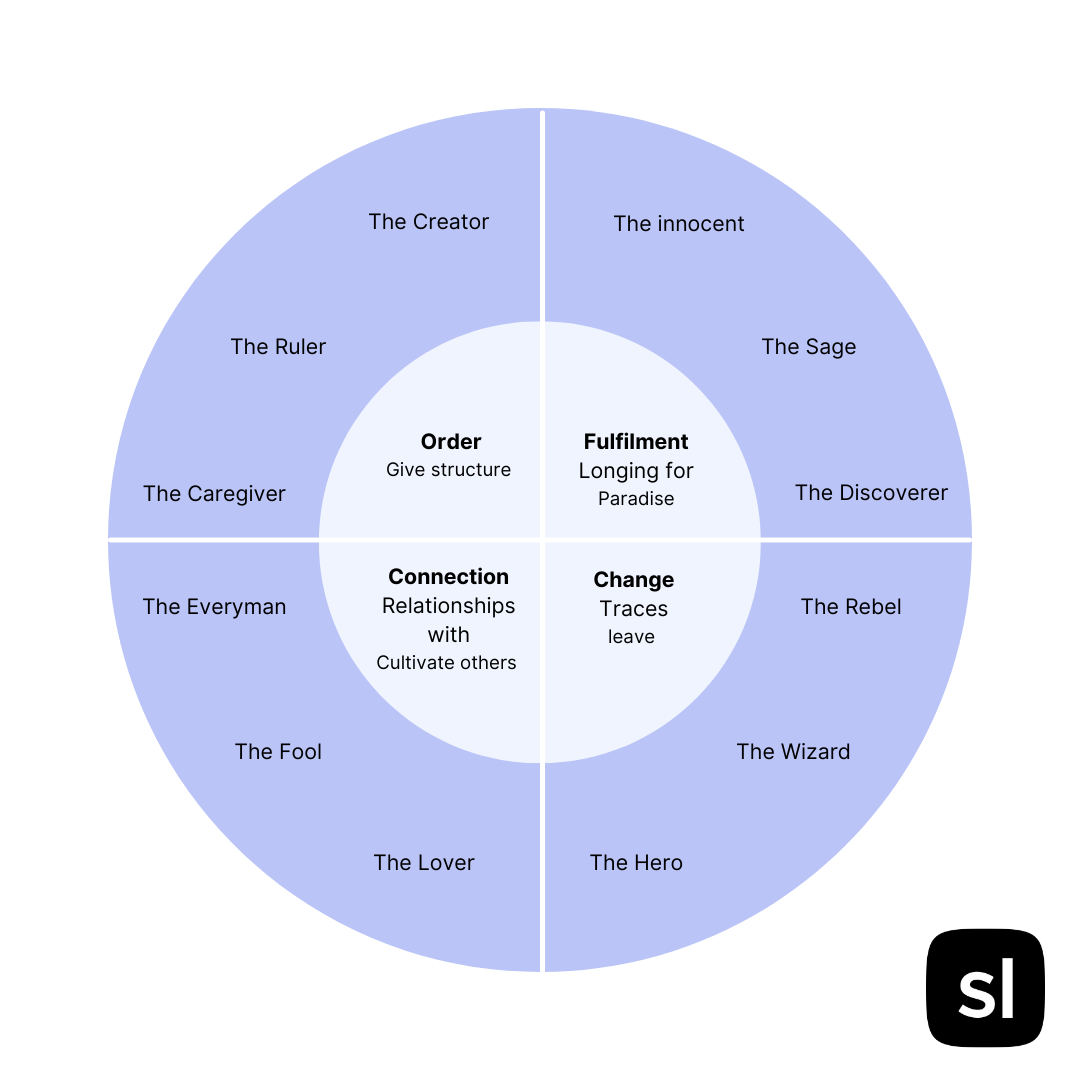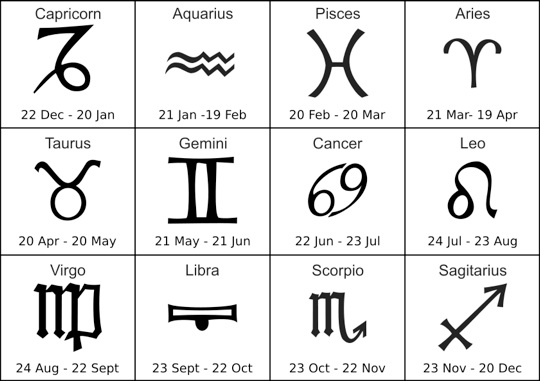
The 12 Archetypes According to Jung: What They Can and Cannot Do
Last update: 16 February 2024 at 11:01 am
This guest article by CRU Brand Consultancy explains what lies behind the concept of the 12 archetypes and discusses its relevance and legitimacy.
There are a few evergreens in the music hall of marketing: memorized popular tunes that appear again and again in the presentations of consultancies and agencies. These evergreens like to come along as colorful charts – and are perfectly suited for half-knowledgeable foreign word festivals.
The Sinus-Milieus is one such example that just won’t die. But at least Sinus has a serious underpinning – i.e., a well-defined theory and clean methodology (even if this type of target group research has long since been superseded by the digital age).
The real air number in the steam chatterer repertoire is undoubtedly the “12 Archetypes of Marketing“. What they stand for, where they come from, and why they’re problematic – that’s what I’d like to address in this post. And last but not least, I want to give some suggestions on how to use the model in a conscious and measured way.
Key Takeaways
- 12 Archetypes Overview: Originating from Carl Jung’s work, these archetypes describe fundamental human characteristics and behaviours.
- Popular Brand Associations: Many big brands are often categorised within these archetypes, although this attribution may not always be accurate.
- Problematic Origins: The concept of the 12 archetypes lacks empirical research and is akin to astrology, leading to vague and oversimplified characterisations.
- Potential Uses: While flawed, the model can challenge brand self-perceptions and provide inspiration for narrative development, yet it should not replace deeper brand exploration and understanding.
What Are the 12 Archetypes?
According to legend, the “12 archetypes” were developed (not to say discovered) by the Swiss psychiatrist and psychoanalyst Carl Gustav Jung. They are supposed to describe the twelve character archetype that we humans unconsciously associate with the same emotions and behaviors over and over again.

Put more simply, in terms of analytical psychology, the archetype is a role model that has structured our history and informed our cultural knowledge accordingly. And because even fairy tales follow their ductus, the archetypes are plausible and understandable even to children.
Looking |
From 32,000 agencies, we narrow it down to only the ones you’ll love.
No commitment, 100% free.
The list of the 12 archetypes commonly looks like this:
The Rebel archetype
The rebel in three words:
- rebellious
- disruptive
- militant
The main thing is “difference”! That is the motto of the rebel. His mission is to stir things up and go against established norms and conventions. It’s not uncommon for someone to get knocked on the head in the process.
The Wizard archetype
The Wizard in three words:
- visionary
- idealistic
- magical
The wizard personality type wants to transform and loves change. He is a changeable visionary and idealist.
The Hero archetype
The hero in 3 words:
- courageous
- sincere
- integrity
The hero strives for power and honor. He is combative in nature and bristles with resilience.
The Lover archetype
The lover in 3 words:
- passionate
- sensual
- soothing
The Lover is a passionate enthusiast, a possesses true romantic human behavior. He is sensual and seductive, but also sensitive and emotional.
The Fool archetype
The Fool in three words:
- playful
- teasing
- optimistic
The fool is all about one thing: fun! He knows how to entertain and has a strong sense of humor. To some he may seem a bit childish.
The Everyman archetype
The Everyman in three words:
- modest
- friendly
- authentic
Everyman has reserved and modest personality traits. He is socially acceptable and gets along well with everyone. However, his need for harmony can sometimes cause him to stay back and not play the role of the main character in social events.
The Caregiver archetype
The Caregiver in three words:
- Caring
- selfless
- compassionate
There is something maternal about the caregiver. He is selfless and self-sacrificing and cares more about others than himself. He wants to protect others and provide security.
The Ruler archetype
The ruler in three words:
- dominant
- cultivated
- self-confident
The Ruler sees himself as a classic leader. He sets the tone and shows the path to be followed.
The Creator archetype
The creator in three words:
- inspiring
- provocative
- creative
The Creator focuses above all on innovation. His ideas sometimes turn out to be very daring and he is willing to take risks. Often this pays off, but sometimes it causes him to stumble.
The Innocent archetype
The Innocent in three words:
- honest
- unpretentious
- humble
The innocent sees the good in everything. He is sincere and optimistic, but at times perhaps a little naive.
The Wise Man archetype
The wise man in three words:
- knowing
- leading
- encouraging
The sage is inquisitive and intelligent. He likes to share his knowledge with others, but also strives to learn constantly.
The Discoverer archetype
The explorer in three words:
- fearless
- adventurous
- independent
The explorer is very adventurous. He likes to travel and is always open to new things.
Want to know your brand archetype?
Just take out short archetypes quiz!
Get started!What Are Archetypes?
Unlike stereotypes, which work from the outside in – so that the viewer’s attributions create a picture – the archetype works from the inside out: as an irrefutable constant of human storytelling of the human psyche. At least that is the story.
The supposed trick now is to locate the personality of one’s own brand within an archetype. From this, the tonality and attitude for one’s own brand communication can be derived into what are called brand archetypes.
And to make sure you don’t get anything wrong, the same examples are repeated for each archetype. Apple is the creator, Chanel is the lover, Nike is the hero, Harley Davidson is the rebel, Disney is the magician, The North Face is the discoverer, etc.

These examples suggest the relevance and validity of the twelve archetypes. Look, they say, even the biggest brands in the world can be beautifully categorized within them! You just have to do it the same way – and your brand marketing is done.
And What’s the Problem?
The fallacy of the archetype apostles can be wonderfully described by the brands that are repeatedly referenced there. It starts with the fact that presumably none of these brands has thought about the appropriate archetype, so the archetype attribution is after the fact.
And it ends with the realization that these attributions are inevitably snapshots that cannot account for the evolutions of brand personalities. Apple, for example, was originally more rebel than creator – and, incidentally, could easily be called an explorer or a wizard.
But the problems begin with the model’s origins. For the twelve archetypes are based neither on research nor on any reality. They are a myth, invented by marketers and retold until they have become an unquestioned standard.
Used guilelessly, the superimposed archetype hinders constructive brand work and replaces it with quasi-esoteric gobbledygook. But one after the other.
Already the founding legend of the twelve archetypes is, with respect, humbug. Carl Gustav Jung is unquestionably a great poster boy: after all, he was the colleague of none other than Sigmund Freud and popularized psychoanalysis in the United States.

And indeed, he writes about his 12 jungian archetypes as “primordial images” , which he locates at the crossroads of mythology and dream interpretation. (To be read in: Carl Gustav Jung, Man and his Symbols. Patmos Verlag 2012)
But these are by no means the twelve characters from the marketing musical chairs. Jung describes only four archetypes, namely ‘Anima/Animus’, ‘the Self’, ‘the Shadow’ and ‘the Persona’ .
Good luck finding your brand in them!
We don’t know who reshaped these four horsemen of the apocalypse into the twelve clichés suitable for advertising that we know today. That it has become a dozen of all things is in any case significant. Because the only ‘branch of research’ that the twelve archetypes remind us of is astrology with its twelve signs of the zodiac.
The Horoscope of Marketing
Each of us knows his zodiac sign; many people even their ascendant. Even for the skeptics and agnostics, one’s horoscope has an almost irresistible appeal. As science fiction author Arthur C. Clarke is said to have said so beautifully:
“I don’t believe in astrology. Sagittarians like me are skeptical in nature.”
Astrology – that is, the identification and reading of earthly characteristics based on the sun’s orbit through the “signs of the zodiac” – seems in many ways to be the natural model for the twelve archetypes: Beginning with the perfect number of the dozen, which we also encounter in the Apostles or King Arthur’s Round Table.

About the vagueness and elasticity of the attributions (for almost every characteristic several equivalents can be found). To the precisely calculated combination possibilities: be it which zodiac signs supposedly match each other or how a company should recruit on the basis of its archetype.
What has made horoscopes successful for centuries is their meaningful element, which wants to make the complicated world understandable to us. To be fair, few people ‘believe’ body and soul in what astrologers serve them daily.
For most people their horoscope is rather a meditation, motivation or simply entertainment, which is no more ‘taken at its word’ than the communal pouring of lead on New Year’s Eve.
And so, enough of the spoilsport. Yes, the twelve archetypes are an unscientific, popular invention, strongly reminiscent of horoscopes. Nonetheless, they have prevailed over the decades. Yes, as a model they are vague and under-complex – but as the saying goes?
All models are wrong; but some are useful.
This beautiful aphorism goes back to statistician George Box, who first used it that way in a paper published in 1976.
So can the twelve archetypes also be useful? Are there use cases for which they are appropriate?
The Missing Instruction Manual
One plausible use of the model could be to challenge existing self-images of a brand. After all, these often have more to do with the industry than with the brand itself.
A company in the medical field is quick to see itself as a “caregiver” or “sage”; a start-up will readily identify as a “rebel” or “explorer.” Ironically, the archetypes can help identify and break through these self-images to allow for new perspectives and narratives.
Another constructive use of the 12 archetypes is in overview and inspiration. For all its faults, the model gives at a glance many ways of describing and addressing the self. One would like to imagine how innocent, the juice manufacturer, so inspired, decided on the spot to build the whole brand around the innocent archetype – with some success.
But even then, the innocent would at best be the exception that proves the rule. Because when simple models like the twelve archetypes (or the LimbicMap) have to shoulder all the brand work, it becomes problematic. If you want to help a company find its own voice and style, you have to listen first and foremost and ask the right questions. A superimposed archetype does not replace this work – it makes it more difficult.





